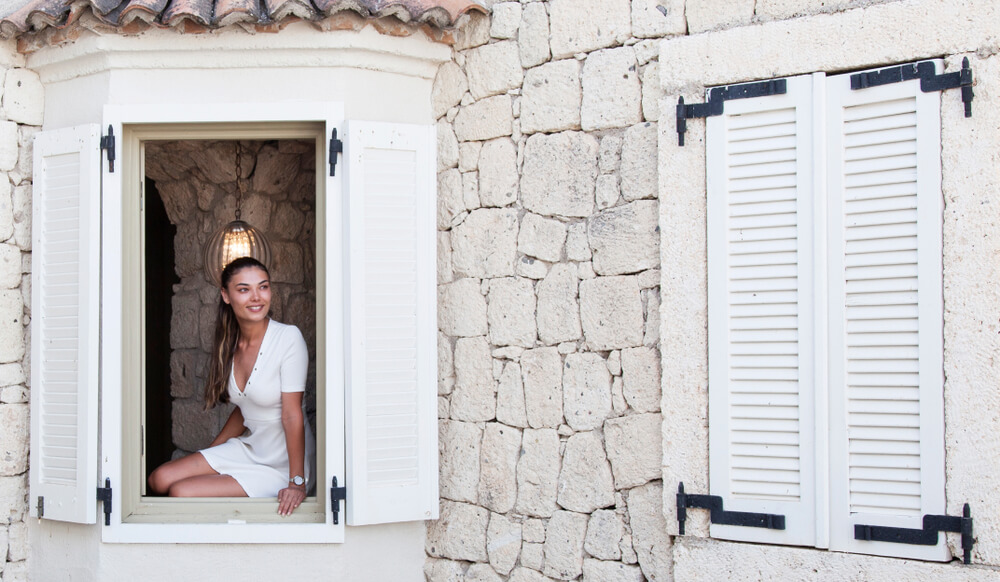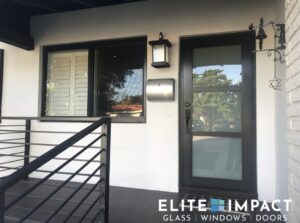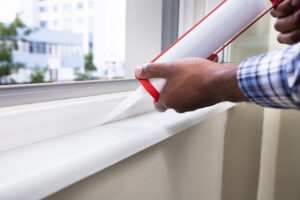Updated: January 16, 2024
Thanks to innovations in modern carpentry and design, South Florida homeowners have myriad choices available when selecting each architectural feature. That includes especially the windows – undoubtedly the single most versatile and important element for creating an uplifting sense of spaciousness.
While the primary function of most types of home windows is providing light and ventilation, different styles will also improve the form and function of your humble abode. From adding a decorative flair and panoramic views to maintaining access control and lines of sight, Elite Impact Glass is here to guide you through the most common window types for homes (and with zero compromise on safety).
Common Types of Windows in Houses
Single-Hung Windows
The most popular window types for homes are single-hung windows. Most homes have at least several, and virtually everyone’s already familiar with them. A single-hung window derives its name from its single sliding (or rotating) lower sash, while the upper sash is fixed in place.
Double-Hung Windows
Like their single-hung counterparts, double-hung windows feature two movable sashes, making them much easier to clean. This also provides greater airflow, making double-hung windows both a more convenient and functional option (especially for those who can’t get enough of the warm ocean breeze).
Horizontal Rollers
With no complex mechanical components and minimal construction required, the beautiful simplicity of horizontal rollers makes for an attractive and affordable option. They’re also highly customizable, but we recommend securing your horizontal rollers for added security using impact-resistant glass that meets or exceeds many South Florida regulatory standards.
Awning Windows
Strategically placed awning windows can maximize your home’s fresh air, even in the rain! It’s all thanks to an innovative mounting design in which the awning window hinges at the top, allowing it to open from the bottom without exposing the interior space to rain.
 Casements
Casements
These pivoting windows open towards the outside and have large, continual glass areas without extra framing other than the actual glass-holding frames. Once you close and lock these, they become highly energy-efficient, minimizing the unwanted air and heat flow, whether it comes from the outside’s high temperatures or the heat trying to escape your home.
Bow Windows
When it comes to architectural flair, it doesn’t get more sophisticated than bow windows. Consisting of four or more panels, bow windows expand outward – often along a curve or shallow geometric angles – letting in more light and expanding your views. They’re ideal for sunrooms, terrariums, or master suites where the goal is to provide a spacious interior area or alcove.
Bay Windows
American architects often rely on bay windows to add aesthetic points of interest along a home’s façade. They’re a simpler alternative to bow windows, providing dimensionality but with a more modest panorama.
Still, bay windows allow much more light to enter your home, including from multiple angles. Certain bay window designs also allow for ventilation, normally in kitchens and dining rooms.
Jalousie Windows
If the location of your home is heavily impacted by heat throughout the day, these are a perfect, cheap choice, especially if no extra air conditioning is necessary. These are made of glass panels with extra metal clips, designed to open and close together, giving the desired amount of air flow, yet limiting the views. It is important to mention that these are not as secure as most types of windows.
Panorama (Picture) Windows
A true crowd pleaser, panorama windows leave the same breathtaking impression as interior glass walls, though for exterior environments. Lending equal separation and spaciousness to outdoor gathering areas, freestanding picture/panorama windows are the perfect solution for transforming patios, courtyards, gardening areas, and other natural settings into veritable works of art.
Other Important Window Considerations
When choosing among the best window types for homes, be sure to ask your Elite Impact Glass window expert about several other value-adding features you can apply to virtually any pane of glass:
- Impact glass built to withstand some of the fiercest storms
- Hurricane shutters for additional protection and security
- UV-protective coating that prevents interior elements from fading
- Energy-efficient panes for enhanced insulation
Beyond the factors we’ve explored here, a thoughtfully selected array of new windows can dramatically boost curb appeal and potentially result in advantageous insurance rates. In either capacity, you’re almost certain to boost your enjoyment (and resale value) of your home.
Advanced Window Solutions From Elite Impact Glass
Choosing new hurricane-resistant windows can be overwhelming, given the range of great options available. However, finding the perfect fit is a time investment well spent, as it’s also an opportunity to upgrade your dwelling and make it truly your own, all while protecting what’s most important to you.
Contact us for a free consultation, or visit our South Miami showroom to explore your options – and learn what makes Elite Impact Glass the most trusted storm window experts in the entire South Florida and Caribbean area.


 Casements
Casements

